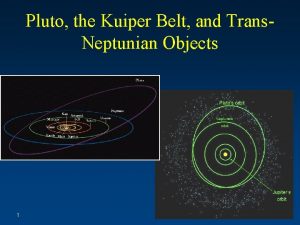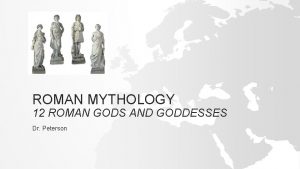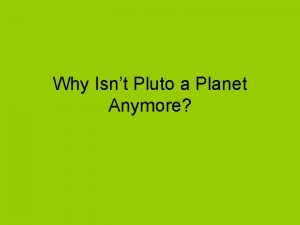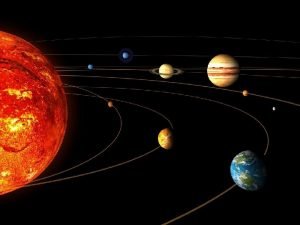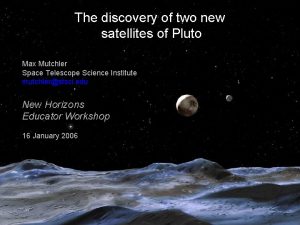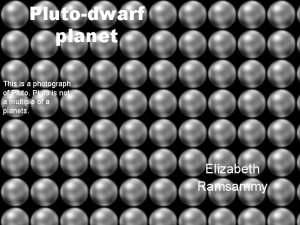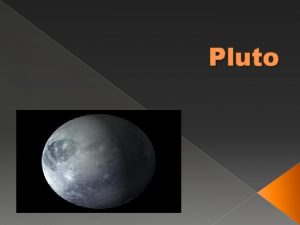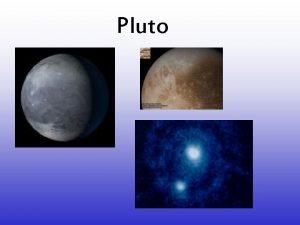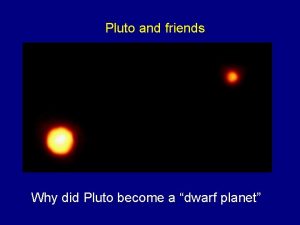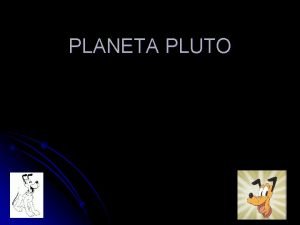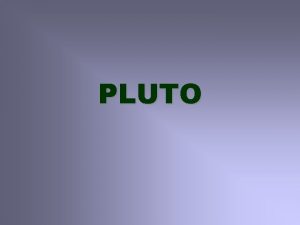From where was Pluto discovered Pluto was discovered








- Slides: 8

From where was Pluto discovered? • Pluto was discovered from Lowell Observatory in Flagstaff, Arizona. • It was founded in 1894 by astronomer Percival Lowell. • Lowell Observatory is among the oldest observatories in the United States.

Who discovered Pluto? • Astronomers noticed that the orbits of Neptune and Uranus were being affected by the gravity of an unknown object in this solar system. • Percival Lowell spent most of his career in the search for Planet “X. ” • Pluto was discovered in 1930 by Clyde Tombaugh.

How long does it take for Pluto to revolve around the sun? • Revolves around the sun every 248 years.

Does Pluto have moons? • Pluto has three known satellites (Hubble Telescope), the largest of which is Charon. • Charon’s diameter is over half the diameter of Pluto, making Charon the biggest moon with respect to the planet it orbits.

What does Pluto look like? • Some of the detail that is visible on Pluto (Hubble Telescope) is the presence of polar ice caps as well as large dark spots near the equator. • The surface temperature of Pluto varies between -391°F and -346°F. The " warmer" temperatures loosely correspond to the darker areas.

What is Pluto? • It has been discovered that Pluto is one of the largest of tens of thousands of objects made of ice, rock, and dust. • A new mission called New Horizons was launched in 2006 and is expected to fly by Pluto in 2015 and provide much needed information about Pluto.

What is the Kuiper Belt? • Discovered in 1992 • Similar to the asteroid belt, although it is far larger— 20 times as wide and 20 to 200 times as massive • remnants from the Solar System's formation • Frozen methane, ammonia, and water

What is the Oort • No confirmed direct observations! • A hypothesized spherical cloud of comets which may lie roughly 50, 000 AU, or nearly a light-year, from the Sun Cloud
